#Hümaşah Sultan
Explore tagged Tumblr posts
Text




Sultans and Their Colorful Clothes + Snowflake appearance on Hümaşah Sultan's dark blue caftan and tulle 2/2
#hümaşah sultan#vildan atasever#muhteşem yüzyıl kösem#magnificent century kösem#magnificent century kosem#mc: kosem#kosemedit#perioddramaedit#periodedit#period rp#ottoman#period drama#periodedits#osmanlı#period#perioddramasource#perioddramagif#historical drama#history#caftan#costume#dress#fashion#queensofbeauty#flawlessbeautyqueens#dailywomanedit#dailyactresses#dailywomen#my gifs#gif
74 notes
·
View notes
Text
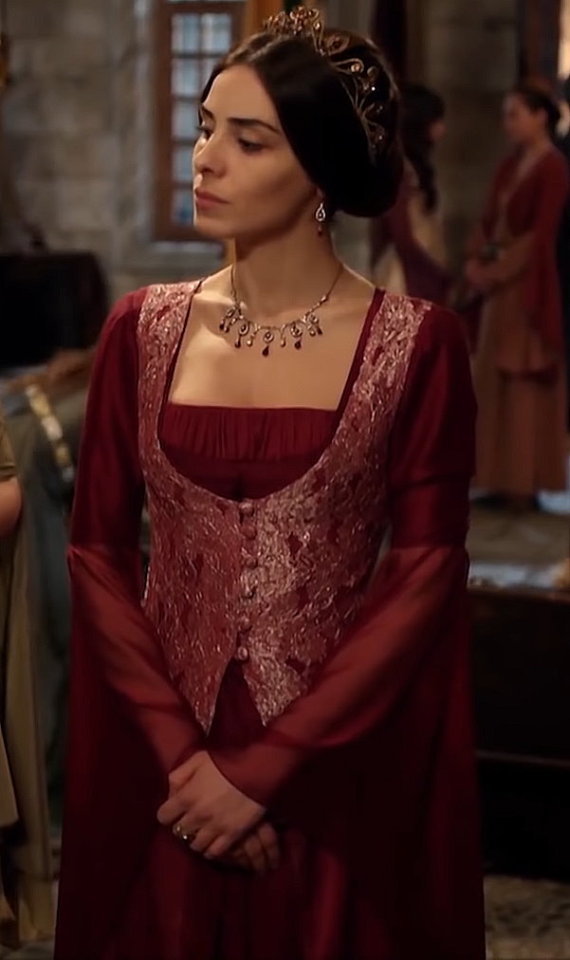




This pink and silver kaftan was first worn by Mahidevran Sultan in the twenty-third episode of the second season of Magnificent Century. It appears twice in the third season, first on Fatma Hatun in the fourth episode and then on Mihrimah Sultan in the thirtieth episode. The kaftan is also worn by Şehzade Cihangir's unnamed concubine in the tenth episode and Mihrimah's daughter Ayşe Hümaşah Sultan in the final episode of the fourth season.
#Muhteşem Yüzyıl#Magnificent Century#period drama#costume drama#historical drama#Mahidevran Sultan#Fatma Hatun#Mihrimah Sultan#Mihrimah Sultan (Daughter of Hürrem)#Unnamed Harem Members#Ayşe Hümaşah Sultan#Ayse Humasah Sultan#Ayşe Hümaşah Sultan (Daughter of Mihrimah)#Hümaşah Sultan#Humasah Sultan#Hümaşah Sultan (Daughter of Mihrimah)#reused costumes#recycled costumes
18 notes
·
View notes
Text




✮ Hümaşah Sultan (Vildan Atasever) — Magnificent Century: Kosem Ep.28
#magnificent century kosem#hümaşah sultan#gifs#muhteşem yüzyıl kösem#mc: kosem#magnificent century kösem#magnificent century: kösem#magnificent century#muhteşem yüzyıl
19 notes
·
View notes
Photo
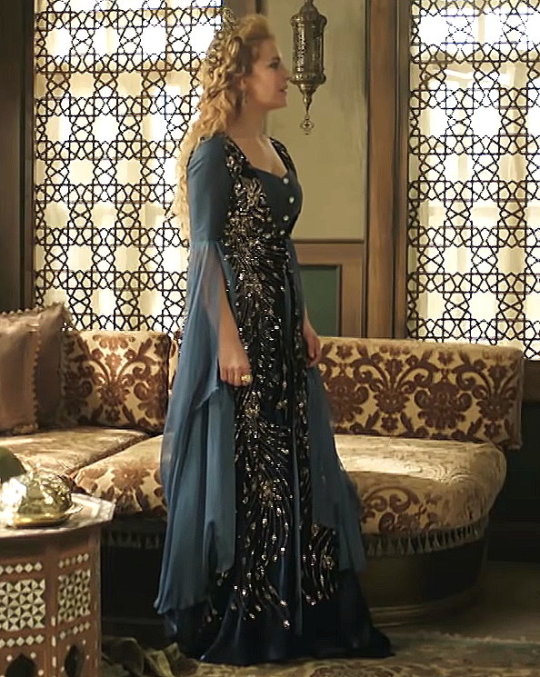
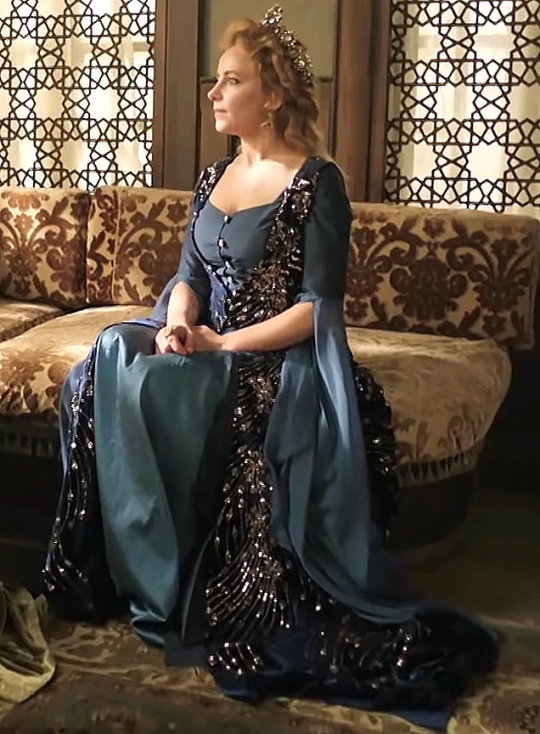
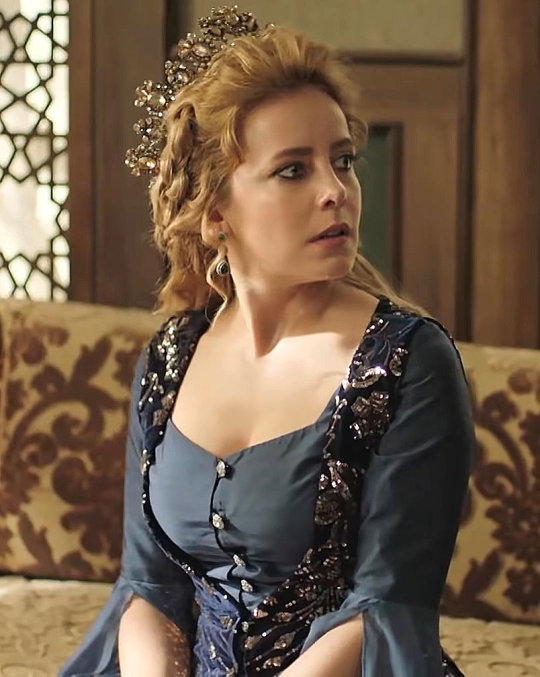
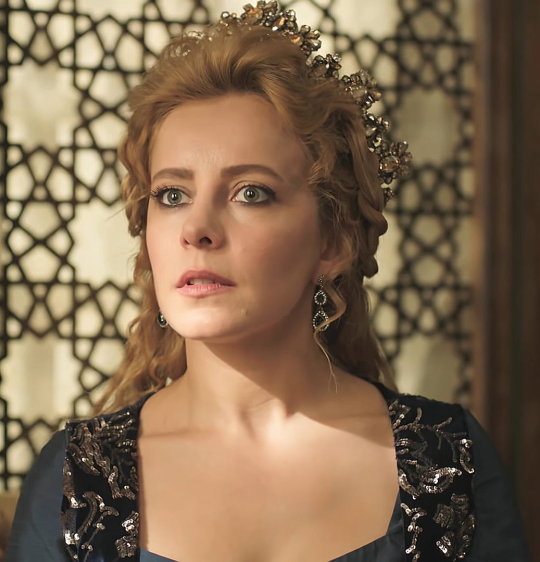

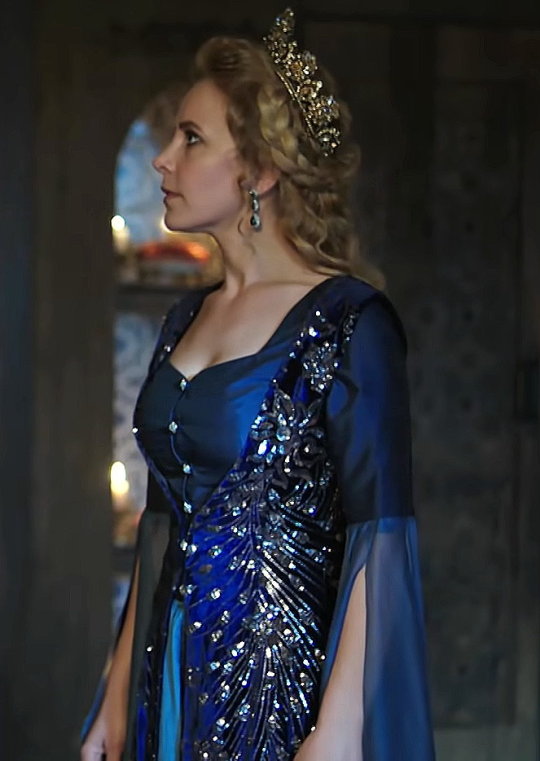
Please someone tell me that they reused this kaftan later on and I just haven’t found it yet. It is too pretty to have been a one time thing.
#Magnificent Century#Magnificent Century Kösem#Magnificent Century Kosem#Humasah Sultan#Hümaşah Sultan
44 notes
·
View notes
Photo
These two have my heart 💘
& I'm definitely including him in my original/basing a character off him. Loved him since episode 1. I want them to be together so bad and I'll try my best to give them the happy ending they do desperately deserve, yet I have a major issue to deal with. She (unfortunately I haven't come up with a name yet) is supposed to be long dead before the story even starts. I'm not used to saving characters— killing them off is much easier. And how do I stick him into the plot? Major writer problems here 😂😭 Let the thinking begin.


98 notes
·
View notes
Text

OK but Hürrem hugging Ayşe Hümaşah like this is so cute
6 notes
·
View notes
Text








PERIOD DRAMA APPRECIATION WEEK 2024 | Day 4 (August 1st): Favorite Relationship → Hümaşah Sultan and Zülfikar Pasha (Magnificent Century: Kösem)
#magnificent century: kosem#muhtesem yuzil kosem#kosemedit#perioddramaedit#perioddramaappreciationweek24#humasah sultan#zulfikar pasha#Vildan Atasever#Mete Horozoğlu#S1E17 Secrets in the Shadows#S1E21 The Wheel of Fate#S1E22 Fraternal Feud#S1E26 The Mad King#S1E19 The Heart in Mourning#mcks1#my edits
94 notes
·
View notes
Text












MAKE ME CHOOSE MEME | anon asked - Gevherhan Sultan's costumes or Hümaşah Sultan's costumes
#magnificent century: kosem#muhtesem yuzyil kosem#perioddramaedit#onlyperioddramas#weloveperioddrama#periodedit#gevherhan sultan#*make me choose meme#*gevherhan sultan
128 notes
·
View notes
Text






Magnificent Century: Kösem + Faceless: Telli Hümaşah Sultan
#kosemedit#Muhtesem Yuzyil kosem#magnificent century kosem#Muhteşem Yüzyıl Kösem#Faceless Sultanas#weloveperioddrama#perioddramaedit#period drama#historical drama#Humasah Sultan#Telli Humasah Sultan#The Illegitimate Prince#Traitor to Faith and Nation#The Reign of Sable#Magnificent Century: Kösem#mc: kosem#Awkward-Sultana
62 notes
·
View notes
Note
Sorry to bother you in this account, I would have a question about Ümmügülsüm Sultan, the possible daughter of Ahmed I. The relazione of Angelo Alessandri from 1637, Page 649 says: "Ha il Gran Signore di congionti per sangue quatro sorelle ancora, ma fuori di seraglio, essendo tutte maritate in visiri." And since I am not really speaking italian, I am not sure if "per sangue quatro sorelle" means full-sister or just a way to say sister (and so can mean half sister too). One of my followers - who says he speaks italian - says it means full-sister and confirms that beside Ayse, Fatma and Hanzade there was another full-sister of Murad IV. I mean while I have my doubts, Alderson also lists one Ümmügülsüm (wife of Halil Pasha) based on harem registers, who had the same amount of salary in 1639 as Ayse, Fatma and Hanzade, the daughters of Kösem (and some other women - possible daughters of Murad III had the same amount, while Atike and one Hatice possibly daughters of Ahmed I had less salary). Also, there is the known other register that you also mentioned on ottomanladies page, based on Tezcan: “A privy purse register from 1622 gives the names of five unmarried princesses, who may be daughters of Ahmed, Osman II, and even Mehmed III: Umm-i Külsum, Hanzade, Halime, Fatma, and Akile.” The fact that there was one Ümmügülsüm in 1622 who was still unmarried, and then in 1639 she had the same amount of stipend as Ayse, Fatma, Hanzade and the relazione mentioning that 4 (full)sister thing, maybe suggests that Kösem and Ahmed MAY had another daughter together, Ümmügülsüm? What do you think?
Hello! I guess my askbox on ottomanladies is still closed.
So, your follower is right; what Angelo Alessandri says in his relazione is that Murad IV has four full-blooded sisters who all live outside the palace because they are married. When I read this part, I simply assumed that the fourth princess was Gevherhan but we don’t have any information about her after Recep Pasha’s death in 1632. Then, I assumed he was wrong because it wouldn’t be the first time a European ambassador mistook half-siblings for full-blooded siblings.
About Ümmügülsüm, I have always assumed he was a daughter of Mehmed III’s or Murad III’s. I have never paid attention to her, as I’m sure you know from my posts on ottomanladies.
But you made me curious so I spent some time looking into this.
First, I think you meant Dumas when you mentioned that list based on harem registers because I have found it in Les Perles de Nacre du Sultanate. Alderson doesn’t list an Ümmügülsüm Sultan among Ahmed I’s daughters (unless I somehow missed it).

Secondly, I think there is a problem with this source: on page 62, the register is from February 1649 to February 1650. In Annex A, though, (page 461), she says that the same register is dated February 1639. So what is the truth? February 1639, because the register keeps saying “Şevval 1048”, and that’s February-March 1639 (you can google it). The mistake on page 62 is… weird, though.
Moreover, the list above is somewhat different from the transliteration she put in Annexe A. For example, on page 463 she says that the register says “Hümaşah Sultan merhum Nakkaş Hasan Pasha”, but on the list she put on page 62, the same Hümaşah Sultan is married to one Hüseyin Pasha. I don’t understand why she changed the source without addressing it— or is it just a typing mistake? I hope it is because I think Hümaşah Sultan was truly married to Nakkaş Hasan Pasha: Nakkaş Hasan Pasha was identified as married to one of Ahmed I’s aunts by the Baron de Selignac, and a letter dated 6 October 1642 by a Ragusian diplomat lists among Ibrahim’s aunts one “Humascie sultana moglie di Hasan Pascia [Hümaşah sultan wife of Hasan Pasha]”. In another letter, this one dated 7 July 1648, Hümaşah is identified as “moglie di Nachasc Hasanpascia Humasce sultan vedova [Hümaşah sultan, widow of Nakkaş Hasan Pasha]”.
If Dumas voluntarily changed Hasan Pasha into Hüseyin Pasha then I don’t know why she did it because contemporary evidence suggests that this princess called Hümaşah was Ahmed I’s aunt and therefore Ibrahim’s great-aunt (I won’t fault the Ragusian diplomat for not stating the difference because it wasn’t done often at the time), and was married to Nakkaş Hasan Pasha, who is called “merhum” in the harem register because he was deceased at the time.
Similarly, on page 462, it is listed one “Kameri Sultan merhum Sofi Bayram Pasha”, but on the list on page 62, she is called Fahri. Again, what prompted Dumas to change the wife’s name? Is it because Öztuna says that Fahri/Fahriye Sultan (daughter of Murad III) was married to Sofu Bayram Pasha? Then again, why was she called Kameri in the register? Is it a mistake from the clerk or did she have multiple names? Or did Dumas transliterate her name wrong? Or did she change the princess’ name into Fahri because that’s what Öztuna says? Interestingly, in the family trees in Annex B, she’s called Fahri again. The same Ragusian diplomat above also lists the wife of Bayram Pasha: “Vanni sultana moglie di Soffi Bariam Pascia”; unfortunately I cannot say what Vanni should be because it doesn’t sound like Kameri at all. It could sound like Fahri but… it’s a stretch.
Beyhan Sultan, Safiye Sultan, and Mihrimah Sultan are widows too but it’s difficult to identify them because their husbands are one “Mustafa Pasha”, one “Mehmed Pasha”, and a “Mehmed Pasha from Kefe”. I tried to google this Mehmed Pasha from Kefe and everyone says he was married to Mihrimah Sultan, daughter of Murad III. The problem is the sources of this claim (on those websites) do not say this. The Ragusian letter talks about a Beyhan Sultan married to a “Mustai Pascia” which could be Mustafa Pasha, but this is all I have to say.
I also would like to highlight that the princesses listed in the Ragusian letter are those who received gifts from the Ragusian diplomat so there could have been more, especially aunts.
As for “Atike Sultan Kenan Pasha” (who receives 9,900 aspers per month): she seems to be Ahmed I’s daughter Atike (also confirmed by the Ragusian letter, who lists her among Ibrahim's sister).
Now, about “Ümmügülsüm Sultan Halil Pasha” (who receives 12,900 aspers per month): I still personally maintain that she was an aunt and not a sister. I could not identify her, nor her husband Halil Pasha, but we have to keep in mind that we don’t have all the names of Mehmed III’s daughters. In the Ragusian letter dated 1648, there’s one “moglie di Hersechli Ahmet Pascia Iumi sultan [wife of Hersekli (? it could mean that he comes from Herzegovina) Ahmed Pasha, Iumi Sultan” (Iumi kind of sounds like Ümmi). It’s basically ten years later Dumas' list so she could have changed husband in the meantime but unfortunately, I couldn’t identify “Hersechli Ahmet Pascia”— if someone else has information about him, please do not hesitate to share (with sources, please).
I’m sorry this was so long and unhelpful, I was carried away :(((
EDIT: I have found the Ragusian letters in V. Miović - Per favore della Soltana: Powerful Ottoman Women and Ragusan Diplomats
35 notes
·
View notes
Note
I wish to give an opinion of daughters of Ibrahim. There is a great abyys in lack of prooves to demarcate daughters of Ibrahim, Atike and Gevherhan. At times, I have an opinion that Atike existed, and at another times that she didn’t exist. For now, I favour the other theory, but i will talk one day about that topic more detailed.
Archiv für Kulturgeschichte Band 77 on page 65, that at the very end of reign of Sultan Ibrahim, Valide Sultan received 125 okka per month, daughters of Murad III named Hümaşah and Hatice received 7 okka per month, daughter of Murad III Fahri(han) received 10 okka per month, Kaya Sultan 16 okka per month, daughters of Ibrahim Gevherhan and Beyhan 30 okka per month and daughter of Ibrahim Fatma 50 okka per month.
Why would Gevherhan and Beyhan receive less stipend than Fatma, as Fatma was adopted and raised by Turhan? Btw, Fatma survived her husband, read Sakaoglu (actually, Ulucay proved it first). Also, in Acta et Diplomata Ragusina, Fatma is mentioned in 1658 document as widow of Fazli Pasha, nothing else is said unfortunately…
Anyway, I would claim that Ayşe Sultan binti Ibrahim really existed. See this quote from work The rise of the Köprülü family (p. 129):
For instance, when Prince Mustafa, the first son of Mehmed IV, was born in Edirne Palace in 1664, Ayşe Sultan, Gevherhan Sultan and Beyhan Sultan, sisters of Mehmed IV, were called to Edirne Palace from Topkapı to join in the celebration for the new prince. This summons shows that some members of the sultan’s family still resided in Topkapı Palace after 1663.
I consider her being the own sister of Mehmed IV. Kütükoğlu was only one right, he was married to Ibrahim’s Ayşe. Ahmed’s Ayşe really died in 1656, in document Vakfiler su defteri there is one document mentioning Ayşe Sultan died before 1660 (if I recall). Her last husband was Ibsir Mustafa Pasha. Sadly, Ibrahim’s Ayşe was wrongly confused also as Ibsir’s wife. Her one and only marriage was with Suleiman Pasha Malatuk (Ermeni). Alderson confused her with Murad IV’s daughter.
In work Atik şikâyet defteri (7 numaralı H.1081-1083/ M.1671-1672) transkripsiyon, Mehmed IV wrote several letters in 1671/72 to his sisters Ayşe and Gevherhan, and their husbands. He doesn’t refer them as hemşirem, but it’s them.
Anyway, in work OSMANLI DEVLETİ’NİN 1660-1661 (HİCRİ 1070-1071) TARİHLİ SEFER BÜTÇESİ (pp. 23-24), there were provided annual payments of some Ottoman princesses in 1661. This payment list does not refer to all of the Sultanas who were knowly alive in 1661, as Ahmed’s daughter Fatma Sultan for example. Only some of them.:
Hâshâ-i hazret-i Valide Sultan 12.000.000
Hâshâ-i paşmaklık-ı Ayşe Sultan 2.595.333
Hâshâ-i paşmaklık-ı Fatıma Sultan 2.005.000
Hâshâ-i paşmaklık-ı Rukiyye Sultan 1.235.000
Hâshâ-i paşmaklık-ı Safiye Sultan 1.005.000
Hâshâ-i paşmaklık-ı Beyhan Sultan 1.560.000 24
Hâshâ-i paşmaklık-ı Gevherhan Sultan 1.520.000
Hâshâ-i Ayşe sultan haseki-i merhum Gazi Sultan Murad Han aleyhi’r-rahmeti ve’l-gufran 100.000
Hâshâ-i paşmaklık-ı Ümmi Sultan 295.000
Hâshâ-i paşmaklık-ı Sâime Sultan 285.000
Hâshâ-i temlik-i merhum Kaya Sultan 1.250.000
See how Mehmed’s cousins (Murad IV’s daughters) and sisters (especially) received high payments, in difference to his aunt Ümmi Sultan and his great-great-aunt Saime Sultan. But, you would notice his sisters Ayşe and Fatma received the highest salaries; Ayşe the very highest as own sister, Fatma little lesser as adopted sister.
Sorry for the long wait, I have been incredibly busy these past few months.
About Ayşe binti Ibrahim, I would refer to this post, in which @rhaenahanzades found that the one married to Ermeni/Malatyalı Süleyman Pasha was Ayşe binti Ahmed I. I’ll paste the citation again, here:
“Soliman passa, Visir della Porta. Ritrouai anche alla Corte per Visir della Porta il Sr Soliman passa, stato un tempo Visir Supremo, dal quale fui all'udienza e lo presentai secondo le comissioni, il quale nell'honorarmi e trattarmi bene non uolse mostrarsi meno cortese degl'altri, offerendosi con molta humanità per ogni occorenza de publici seruitii. Questo Sr è assai noto all'EE. VV. per rellationi di diuersi loro ambassadori, onde a me non occorre tediarle in detto proposito. Dirò solo questo, che non le uol male e che sia personaggio da potterle fauorire, essendo ben uoluto da S. Mtà, col quale è ancor congiunto col uincolo di parentella, mentre la sua zia Aisce sultana tiene per moglie.” (“Dubrovačka akta i povelje” vol. 3, pages 661 and 662)
I believe Ayşe binti Ibrahim died pretty young and therefore never entered the Ragusian ambassadors’ lists of gifts.
As for Fatma binti Ibrahim, I must have missed when it was decided that she had been adopted by Turhan because I have never heard of this.
About the list of payments you’ve found, I’m not sure those princesses are identified correctly:

I have identified them based on seniority and the amount of money, which seems to me to be what their lands yield. I don’t think these are stipends.
Anyway, if we put the princesses in order of amount of money, I think it’d be easier to understand who is who:

Ayşe and Fatma stand at the top of the hierarchy because a) they’re older and b) they must have amassed a great amount of land during their lives. After them we have the sisters of the reigning sultan (Mehmed IV), so Beyhan and Gevherhan (possibly in order of birth??); then we have Murad IV’s daughters (Kaya is mentioned as deceased because she was at the time), and lastly we have two minor princesses: Saime, a daughter of Murad III and a non-haseki concubine, and Ümmi, either a daughter of Ahmed I or of Murad III as well. I say this because I think their small amount of land means they were not daughters of Haseki Sultans: if Ümmi is Ayşe and Fatma’s sister that’s the only reason she would possess less land than them.
#ask post#ask: ottoman history#kehribar-sultan#ayse sultan daughter of ahmed i#fatma sultan daughter of ahmed i#rukiye sultan daughter of murad iv#safiye sultan daughter of murad iv#kaya ismihan sultan daughter of murad iv#beyhan sultan daughter of ibrahim i#gevherhan sultan daughter of ibrahim i#saime sultan daughter of murad iii#ummi sultan daughter of mehmed iv
11 notes
·
View notes
Text
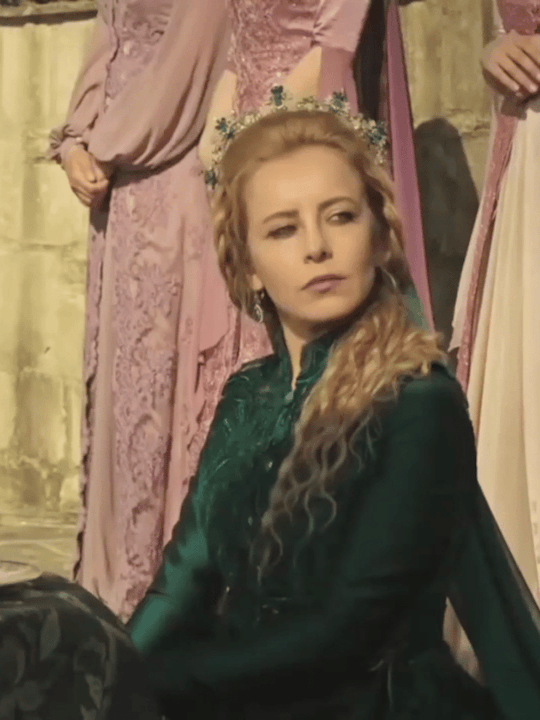
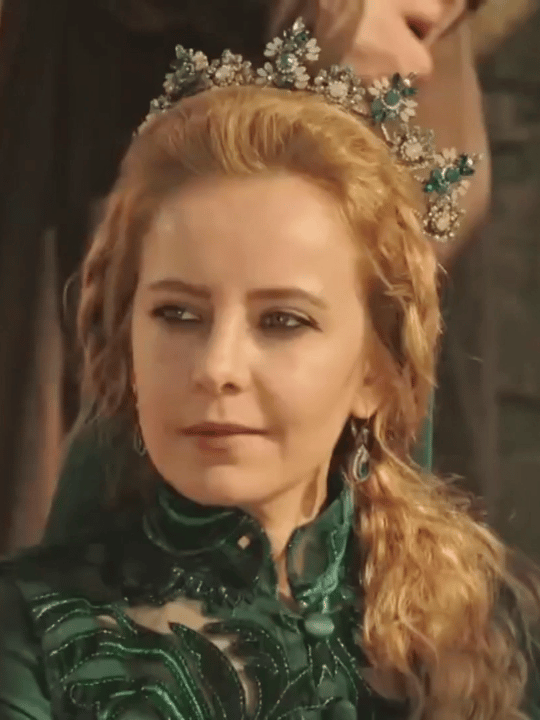
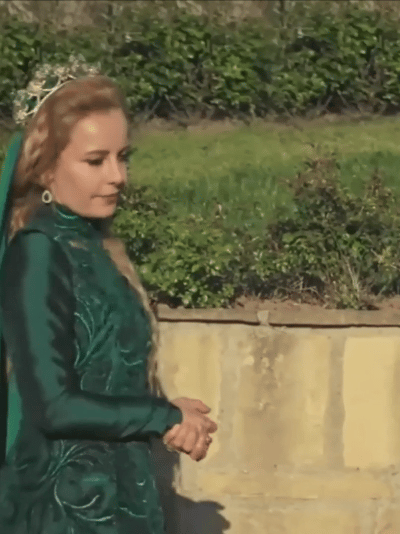
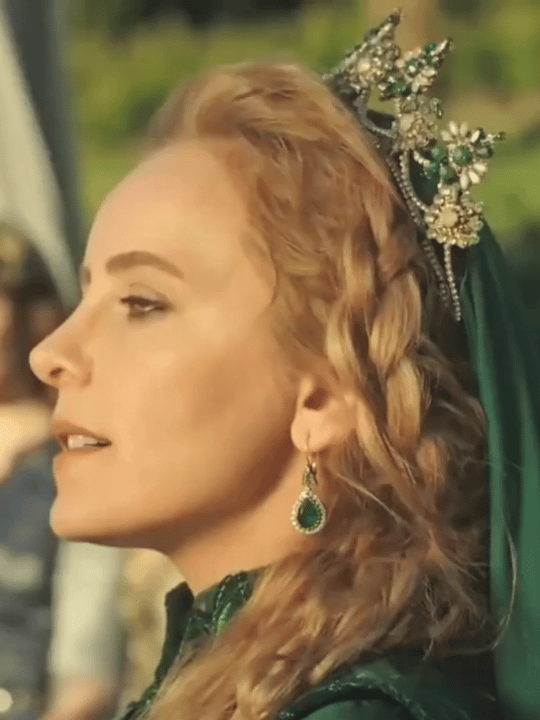
Sultans and Their Colorful Clothes + Hümaşah Sultan's beautiful patterned green caftan
#hümaşah sultan#vildan atasever#muhteşem yüzyıl kösem#muhtesem yuzil kosem#muhte┼ƒem y├╝zy─▒l k├âsem#magnificent century kosem#magnificent century kösem#mc: kosem#kosemedit#perioddramaedit#periodedit#period rp#period drama#period#perioddramasource#perioddramagif#queensofbeauty#dailywomanedit#dailyactresses#dailywomen#fashion#beauty#costume#historical drama#history#dönem#sultan#osmanlı devleti#osmanlı imparatorluğu#osmanlı
82 notes
·
View notes
Text



This golden tiara with green and orange stones was seen three times during the fourth season of Magnificent Century. It was first worn by Huricihan Sultan in the eleventh episode, then by Hümaşah Sultan in the twenty-ninth episode and lastly by Ayşe Sultan in the thirty-fifth episode.
#Muhteşem Yüzyıl#Magnificent Century#period drama#costume drama#historical drama#Huricihan Sultan#Hümaşah Sultan#Humasah Sultan#Ayşe Hümaşah Sultan#Ayse Humasah Sultan#Hümaşah Sultan (Daughter of Mihrimah)#Ayşe Hümaşah Sultan (Daughter of Mihrimah)#Ayşe Sultan#Ayse Sultan#Ayşe Sultan (Daughter of Şehzade Bayezid)#recycled jewellery#reused jewellery
20 notes
·
View notes
Note
hi dear! i just wanted to say i love your writing and that i'm really excited too see that you write for magnificent century as well, because no one does! i was wondering if you could write a quick little story about şehzade iskender (mc: kosem) and reader, the plot can be whatever you want it to, thank you so much for reading this! ❤️

Hello dear. I am so glad to hear that you liked it. You are right, there are not many articles for Magnificent century/Kösem. I will try to write as much as I can for these two series characters. I hope you like it.
You and Sehzade İskender met when you were very young. You were a young concubine who had just come to the palace and he was a boy who had just joined the Janissary Corps. As the years passed, you had become a real friend. However, after the first few years, İskender started to see you as more than a friend. He always dreamed of running away from the palace with you and starting a family with you. In fact, when you found out that he were a Prince, it was a big shock for both of you. At first, he did not want to be a Prince and fight for the throne. However, he started to think about the life he could provide you if he became a Prince and ascended to the throne. Soon, he started to plot with his mother Safiye Sultan and his sister Hümaşah Sultan. Safiye Sultan did not object to her son wanting you for himself. After all, she thought her son deserved everything. When you were chosen as Sultan Ahmed's concubine, he secretly took you away from the Palace. You started living in a secret mansion. You were afraid of what would happen next. You hoped that everything would end well.
#muhteşem yüzyıl kösem#magnificent century kösem#sehzade iskender#sehzade iskender x reader#historical characters#ottoman empire
15 notes
·
View notes
Text
Family tree of Mehmed III
Mehmed (1566.05.26. - 1603.12.22.) - Handan (~1568 - 1605)
Ayşe 1583-1632/9 - Destari Mustafa Pasha 1602-1610 * 2 daughters and one son, who all died young - Gazi Hüsrev Pasha 1613-1632
Selim 1585-1597
Şah 1587-1617/8 - Mirahur Mustafa Pasha 1604-1610 * three sons, all died young - Cigalizade Mahmud, son of Cigalizade Yusuf Sinan Pasha 1612-until her death * Mehmed (?-a. 1650), Mustafa (?-?), Karahoca Ibrahim Kethüda (?-a. 1650)
Ahmed I 1590-1617
Süleyman ~1593-1597
Nani believes she had one son Osman, who was 3 or 4 in 1600
Mehmed (1566.05.26. - 1603.12.22.) - Halime (~1568 - after 1624)
Hatice 1585-1617? - Mustafa Aga, one Yeniçeri officer
Mahmud 1587-1603
Safiye 1590-? - Davud Pasha 1604/1605 (consummated 1606)-? * Süleyman (after 1606 - after 1662)
Halime - She could be the wife of Tiryaki Hasan Pasha (1604-1611), but maybe she was unmarried until 1622. - She could be the wife of Budin Ali Pasha (?-1616?)
Cihangir 1598-1602 (identity of his mother is not known for sure)
Mustafa I 1600-1639
And Mehmed III had another daughter Hümaşah, but we dont know anything about her. She could be the wife of Tiryaki Hasan Pasha (1604-1611), or the wife of Budin Ali Pasha (?-1616?) or none of those.
Theories:
Ayşe: I believe she was the eldest daughter of Mehmed, and so the daughter of Handan. Mehmed got Handan after his circumcision in 1582 June, so they could start reproduction in August or so. In 1600 Nani said, the sultan had a daughter, who was 18 years old and that the sultan is thinking about her possible husbands. Based on ottoman calculations 18 is actually 17, so she was born in 1583. Back then Handan as a new favourite, gift of the beloved aunt of Mehmed, possibly was a soley sexual partner for a while making logical that Mehmed's first child was Handan's. And as Destari Mustafa seems to be the first Damad of Mehmed III's daughters, his wife should be the eldest Sultana.
Ayse: She survived her husband in 1632 but does not mentioned after 1639 in the register she was listed previously, which could mean she died between 1632 and 1639 or she moved back to the Old Palace, and so we should search for her in another register.
Halime: All we know is that she was unmarried in 1622. This could mean: she was too young to be married off or simply she was widowed. I personally think she was the wife of Tiryaki Hasan Pasha between 1604 and 1611, then a widow until 1622 (at least), or also the wife of Budin Ali Pasha until 1616.
Hatice: Actually the identity of her mother is not known for sure. She is referred to as Halime's daughter in one source, however, her husband's identity is wrong in that source, so maybe she was not Halime's but a random consort's. Her husband is quite low-level compared to others, so maybe she did not have a brother. OR the identity of the husband (yeniçeri officer) supports the original theory of her being Halime's. We know how Mahmud and Halime had a close relationship with the janissaries and then. Maybe Hatice had something to do with it through her hubby? True, her husband was a Yeniçeri leader only in 1616, and true, that we don't know the exact date of their wedding. The agha died at the end of 1616 and Hatice is lost from history. Maybe she died, maybe remarried.
For Hümaşah it is possibly she died before being married to anyone, or she may was the wife of Tiryaki Hasan Pasha between 1604 and 1611, and/or the wife of Budin Ali Pasha until at least 1616.

18 notes
·
View notes
Text
Ibrahim and Hatice's wedding in the show is the grandest, happiest, most feastful wedding of the series, with as many celebrations as can be. It's obvious why, of course: given the show has the most "foreign politics" plots at this very point, we have to have separate moments of the ambassadors and the people of power acknowledging that whole ordeal, it's the first ever royal wedding we see in the series and it's both a payoff of so many episodes of development of Ibrahim and Hatice's story, a high culmination point, and a setup of the right upcoming close matter of the Jannisary rebellion and the future, more far looming (or that's how it merely looks like) issues of Hatice and Ibrahim's relationship (Gülfem's usual prominence is set aside for a bit to make place for Nigar); each wedding in the show signifies a major change to the status quo, but namely Hatice and Ibrahim's wedding accentuates that the most, as it doesn't just have someone permanently moving to a new place/castle (Hatice here and in E94, Nigar in E44-5, Mihrimah in E99 etc.), giving birth (Mihrimah to Ayşe Hümaşah after her own wedding, but Hürrem to Selim during Hatice's wedding) or getting wounded (Ibrahim during Hürrem's wedding, mirroring E10-E11 a bit) and new twists on established dynamics (not just the wed couples but also Mahidevran and Hürrem, SS and Mustafa, Hürrem and Leo in E17; Nigar and Ibrahim in E17 and E44-5; Hürrem, Hatice and Ibrahim, Hürrem and all the others in general in E42-3; Ibrahim and Matrakci in E44-5 etc.), but it also has a timeskip, showing the older kids to literally stress that a next stage of the characters' lives is coming forth. We get to see what a wedding is like for the first time, in its fullest and most detailed to accustomize ourselves even more in this world, so this may allow for the other weddings to lean on a more individual focus of the characters of the wedding themselves and what the wedding entails for them and those around them, the celebrations dimish and even the time the wedding's given could do so too depending on the narrative point of said wedding (more time could be given to the aftermath of the wedding than the wedding itself like in Nigar and Matrakci's case), formal weddings for ulterior, political purposes and alliances increase much more (while Hatice and Ibrahim's wedding is one of the biggest exceptions in the series and it's fascinating that we begin with it) and we get to have more bittersweetness or outright tragedy if the wedding is such for the characters. The weddings aren't only happy, they can also be like a funeral and we gradually arrive at a stage where we can actually observe that, not having it simply be hinted at (like Hürrem and Hatice's respective weddings to Lala Kasim's son and Mehmet Celebi were hinted at). The grander yet more interpersonal stakes and the bigger lean inside the empire are punctuated by the weddings as well.
{All that is to also say that it's sad that Hürrem claims that she won't get the wedding Hatice gets but Mihrimah will get it instead, when precisely hers and SS's wedding is the closest to Hatice and Ibrahim's in terms of massiveness, unprecedentedness (a big shift in traditions due to a love match as well, or rather, an even bigger one as a sultan hasn't freed and married a concubine for a looong time), structure (ceremony, feasts for the people as well as for those around the sultan and a major parallel event during the wedding, in this case Ibrahim's wounding) and feel (yes, a sorrowful element is around for everyone other than the married people this time instead of the everpresent happiness in Ibrahim and Hatice's wedding that contrasts only with Mahidevran's anguish that isn't even about the wedding, but an even bigger joy is presented for Süleiman and especially Hürrem; in E42 itself, the focus is all on the double joy with the ongoing princely circumcision and the surprising wedding in the very end, while E17 has an ongoing wedding and the surprising birth, so the focus shifts more), while Mihrimah's is a genuinely sorrowful wedding, more parallel to Hatice's E94 wedding than her E17 wedding instead.}
#magnificent century#muhteşem yüzyıl#muhtesem yuzyil#hatice sultan#ibrahim pasha#hurrem sultan#sultan suleiman#mihrimah sultan#(and just in case)#ibratice#hatibo#surrem
14 notes
·
View notes